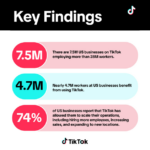Niantic, the pioneering force behind Pokémon Go, is entering a new era as it divests its gaming division to mobile gaming giant Scopely in a $3.5 billion deal. The transaction marks a significant shift for Niantic, allowing it to focus on its geospatial AI ambitions under a newly established company, Niantic Spatial Inc.
Scopely’s acquisition includes not only Pokémon Go but also Pikmin Bloom, Monster Hunter Now, and the teams responsible for these globally popular titles. More than 2,300 Niantic employees will transition to Scopely, ensuring the games maintain their continuity and long-term development. The deal also includes an additional $350 million in cash from Niantic, bringing the total transaction value to approximately $3.85 billion for Niantic equity holders.
John Hanke, Niantic’s founder and CEO, emphasized that the company’s games have always been about fostering real-world exploration and social interaction. “Niantic games have always been a bridge to connect people and inspire exploration, and I am confident they will continue to do both as part of Scopely,” he stated. Scopely, known for its success with games like MONOPOLY GO! and Stumble Guys, is expected to bring its expertise in live-service operations to further enhance Niantic’s existing gaming ecosystem.
As Niantic steps away from game development, it is doubling down on its geospatial AI initiatives through Niantic Spatial Inc. This spin-off will focus on building high-fidelity 3D maps and advancing artificial intelligence to create immersive real-world digital experiences. Niantic Spatial will be led by John Hanke and will receive a substantial financial boost, with $250 million in funding, including $200 million from Niantic’s balance sheet and a $50 million investment from Scopely.
Niantic Spatial aims to develop a Large Geospatial Model, leveraging over 30 billion posed images to create an advanced AI-powered world model. This technology enhances spatial reasoning in large language models (LLMs), allowing for a richer understanding of real-world locations. Additionally, its Visual Positioning System (VPS) and computer vision stack, already used in Pokémon Go and other games, will now be positioned for broader applications across industries like logistics, construction, tourism, and education.
With this transformation, Niantic Spatial will continue to operate Ingress Prime and Peridot as flagship examples of its geospatial platform’s capabilities. Meanwhile, Niantic’s legacy in gaming is set to thrive under Scopely’s stewardship.







Comments
Loading…